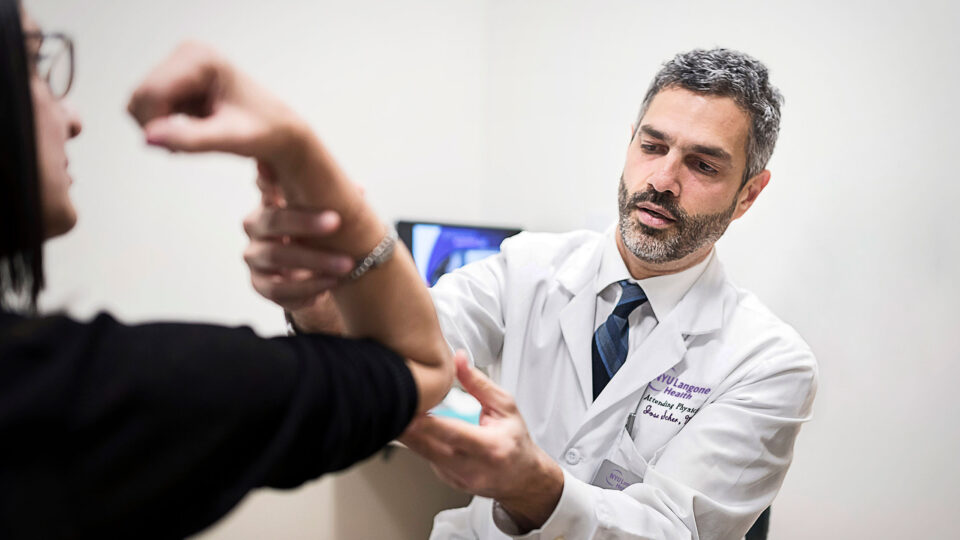New funding from the NIH will help NYU Langone Health researchers explain mechanisms that underlie autoimmune conditions, including lupus nephritis. Growing evidence suggests that a milder and early form of lupus nephritis, Class II, can progress to more-advanced disease states in some patients, underscoring the critical need for a deeper understanding of the disease pathway.
Under the umbrella of AMP Autoimmune and Immune-Mediated Diseases (AMP AIM), computational biologist Kelly V. Ruggles, PhD, is developing and utilizing multiomic approaches to elucidate early disease pathogenesis in lupus nephritis.
Launched in December 2021, the AMP AIM program seeks to deepen understanding of the cellular and molecular interactions that lead to inflammation and autoimmune diseases. NYU Langone is a lead center in this ambitious effort, which has attracted a total of $58 million in public and private funding. Jill P. Buyon, MD, the Sir Deryck and Lady Va Maughan Professor of Rheumatology in the Department of Medicine, is contact principal investigator of the program’s lupus team.
“We want to find ways to slow or halt disease progression.”
Kelly V. Ruggles, PhD
“Directing our efforts toward understanding early disease pathogenesis is important,” Dr. Ruggles says. “We want to find ways to slow or halt disease progression.”
Multimodal Data Analysis
The analysis, led by Dr. Ruggles in collaboration with Dr. Buyon, focuses on multimodal single cell sequencing integration, starting with scRNA-seq and global and spatial metabolomics to connect transcriptome-predicted metabolic states and spatially resolve metabolic changes.
Additional data modalities—including CITE-Seq, spatial transcriptomics, and multiplexed tissue imaging—will also be applied when available. These combined analyses, in turn, will complement ongoing AMP AIM working group efforts and help connect and harness existing data for enhanced discovery.
“We’re leveraging our group’s expertise in precision medicine, extensive experience working with computational multiomics in immunological disorders and ongoing collaborations with multiple AMP AIM teams,” Dr. Ruggles says.
These varied methods, she explains, will be first applied to 16 Class II lupus nephritis research biopsy cores, which will then be compared to 150 cores from patients with more advanced lupus nephritis, including Class III, IV, V, and mixed, to better understand the molecular underpinnings of early disease and potential drivers of progression.
Seeking Predictive Biomarkers
Despite continued efforts, the identification of robust and reproducible urine- and blood-based biomarkers for predicting and tracking lupus nephritis has been challenging. This is mainly due to the heterogeneity of the condition, which can vary from silent disease to rapidly progressive kidney damage.
According to Dr. Ruggles, identifying unique transcriptomic and metabolomic signatures associated with early disease is key to the long-term goal of developing predictive biomarkers. “We’re searching for robust molecular patterns in the data,” she explains. “Uncovering a gene or metabolite signature that correlates with a clinical phenotype would be a game changer.”
Given the recent advancements in technology, Dr. Ruggles foresees a shift toward optimized and personalized management of patients, aided by a battery of next-generation biomarkers.
A Glimpse into the Future
Looking to the future, this extensive molecular analysis could be applied in multiple ways, notes Dr. Ruggles, including for personalized medicine.
“By tapping into a patient’s distinct molecular profile, we could tailor treatments to their specific needs.”
“The possibilities for personalized medicine in this space are vast,” Dr. Ruggles says. “By tapping into a patient’s distinct molecular profile, we could tailor treatments to their specific needs.”
In addition, consolidating and integrating data from all AMP AIM initiatives could have broader implications for other autoimmune disorders. Beyond lupus, for instance, the researchers plan to apply these methods to psoriatic arthritis samples from the AMP Psoriatic Response and Onset: Genes Radiology Environment Skin and Synovium (AMP PROGRESS) study and to rheumatoid arthritis samples at NYU Langone to assess molecular and phenotypic changes in those diseases as well.






